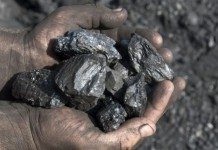
MAKING sense of the platinum group metals (PGM) industry right now is hard to do. The outlook for the platinum price has improved recently, but the prices of other metals mined as its by-product, such as palladium and rhodium, are heading in the opposite direction. Confusingly, the trajectories of lesser known PGMs, such as iridium and ruthenium are again different.
The challenge for industry analysts is two-fold. The outlook for primary metal supply from the world’s two largest producers, South Africa and Russia, has changed enormously. Russian PGM exports are sanctioned, though they still turn up in China. Primary supply from South African has been heavily disrupted by Eskom curtailments, an 80% increase in costs over the last few years, and under-investment in resource development which could some shafts – now cash-burning – close.
On the demand side, there’s even less clarity. Analysts can’t tell how quickly hydrogen technology, which is PGM intensive, might be rolled out. Does it work on an industrial scale, can it be produced cost effectively, and how might supporting infrastructure be rolled out are questions that continue to shape its future.
Standard Chartered Bank precious metals analyst, Suki Cooper estimates that hydrogen technology, which intensively uses PGMs, could drive 450,000 to 850,000 ounces in new annual PGM demand by 2030 – a significant variance underpinning the margins of uncertainty.
Another technology, electric vehicle (EV) batteries, is already here. The question, however, is where it goes from now, and how might it proliferate? Again, analysts can’t say with accuracy.
Henk de Hoop, CEO of industry consultancy SFA Oxford says uncertainty in lithium supply is a major concern for OEMs. So fragile is the lithium market that even increases in the adoption of home solar applications has the potential to disturb its balance, he says. The mines required for two-thirds of projected lithium supply have yet to be built.
What can be said however is that PGMs are in for a ride, especially given short-term macroeconomic concerns linked to the reopening of China’s economy this year, which may disappoint depending on the extent of its metal inventories.
“We really think this will be a watershed year for PGMs,” says Cooper. The serial deficits that drove the palladium price to its historic highs between 2016 to 2021 are over as automakers switch to cheaper platinum for standard autocatalyst production. The platinum market is inversely heading for serial deficits of its own, the price of which will exceed palladium by 2025, says Cooper.
The share prices for the JSE’s major PGM producers reflect some of the market uncertainty as well as company specific concerns. Anglo American Platinum (Amplats), for instance has halved in the last 12 months. The share has come off an all-time high just over a year ago in a correction that potentially presages a new era for the company. According to Adrian Hammond, an analyst for Standard Bank Group Securities, Amplats will lose its “flagship” status as the industry’s lowest all-in cost producer in five years’ time.
That’s because of costly new investment, primarily the underground expansion of its Mogalakwena mine and the construction of a third concentrator. It will see Amplats pumping billions of rands into its operations at a time of high industry inflation. This search for new resources is underway elsewhere in the industry such as Impala Platinum’s bid for Royal Bafokeng Platinum (RBPlat), the aim of which is to extend the life of its Rustenburg division. An estimated 450,000 oz in annual production could be shed if the RBPlat transaction fails.
The Mogalakwena investment and bid for RBPlat stem from chronic under-investment in South Africa’s PGM industry between 2011 and 2018. It is now embroiled in an urgent game of catch-up, according to RMB Morgan Stanley. The bank estimates industry capex this year alone will top R50bn – a fourfold increase since 2016 – and could be similar in 2024, outstripping the additional stress of cost inflation.
It’s worth emphasising this capital spend is in order to sustain metal production rather than grow it. Primary PGM production from South Africa fell 15% last year, according to the Minerals Council, and could decline again this year another 5% to 15%, depending on the extent of Eskom power curtailments.
Long-term, this is positive for PGM pricing, but for now high-spending South African PGM producers are low-yield and unattractive, despite recent sell-offs, especially given cost inflation. Except, perhaps, one.
Speaking at the PGM Industry Day, a conference held in Johannesburg, Hammond said that in the absence of a 20% increase in the rand-basket price of PGMs only production growth would offset cost inflation.
“It’s the only company not shown behind me,” he said indicating the board of conference sponsors the speakers had for backdrop. That was Northam Platinum which said in at its interim results presentation in March that it was “on the way” to becoming a one million ounce a year producer after registering half-year production of 393,000 oz, an 11% year-on-year improvement.
This article was first published in the Financial Mail.










